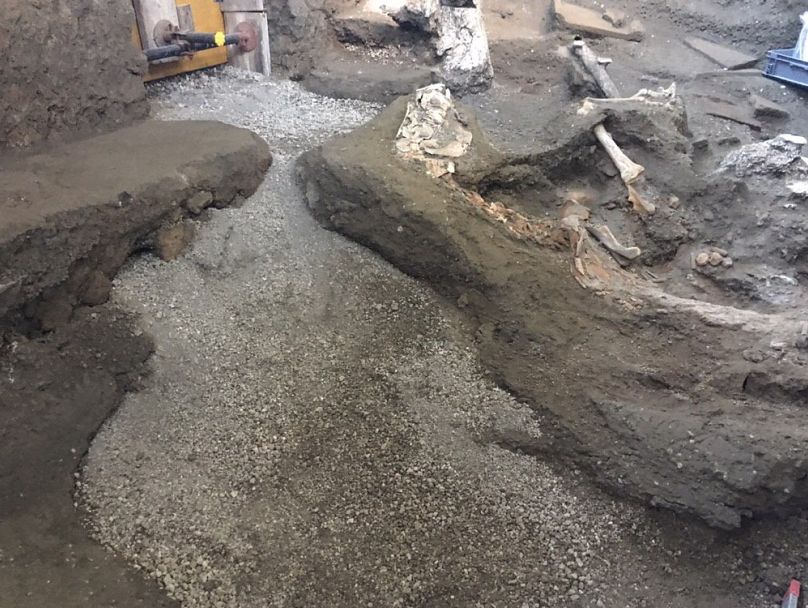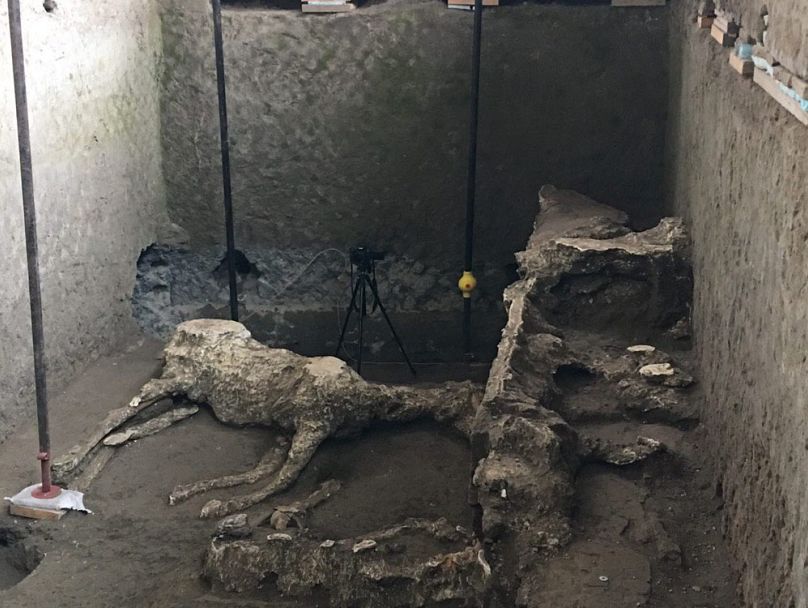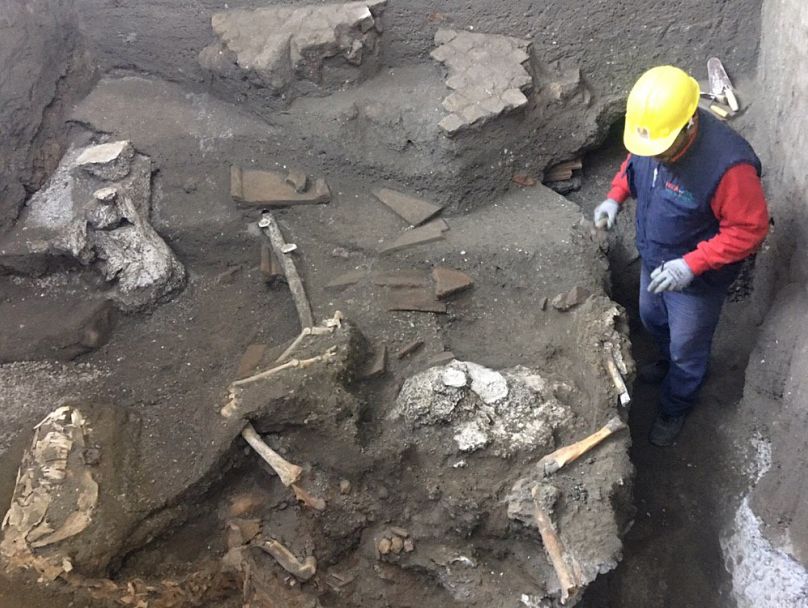In AD79 the ancient city of Pompeii was destroyed by an eruption that killed more than 2,000 people. The city’s ruins have become one of the most visited archaeological sites in the world.
Archaeologists have unearthed the petrified remains of a saddled horse in the northern excavation zone outside the walls of Pompeii, Italy.
The presence of the thoroughbred’s elaborate military harnessing indicates it may have been part of a rescue attempt for Pompeiians fleeing the erupting Mount Vesuvius.
The saddled horse was found frozen but ready for action near the remains of at least two other horses in the stable of Civita Giuliana at the Villa dei Misteri (Villa of the Mysteries) on the outskirts of the city, which likely belonged to a high-ranking military officer.
The excavation area was previously dug up in the early 1900s but then later re-buried.
"The horses were ready to be used, with their things,” Massimo Osanna, Director of the Pompeii Archaeological Park told the Italian news agency ANSA, “We don't know if the eruption surprised them all while they were preparing to make their escape. This will be revealed by the investigations."
"The three horses, perhaps like the first which was discovered and analysed, must have belonged to the ‘noblest breed’ of display animals, as indicated by their imposing size - likely the result of selective breeding - and the quality of their iron and bronze harnesses,” said Osanna.
He added the discovery was "a very rare find".
During the excavation of the body, five bronze finds also were discovered. Four heavily reworked conifer-wood finds, coated in bronze lamina and half-moon shaped, were found on the ribs of the rib cage; a fifth object formed of three hooks with rivets connected by a ring to a disc, also in bronze, was recovered from under the belly, near the hind limbs, according to the park.
In AD79, more than 2,000 people were killed when Mount Vesuvius erupted, destroying the ancient city of Pompeii. The city’s ruins have since become one of the most visited archaeological sites in the world.
On 16 October of this year, archaeologists discovered an engraving that suggested the eruption occurred in October of AD79, rather than August as previously thought.
Since then several small earthquakes reaching up to 1.8 in magnitude have been recorded by seismographs at the Vesuvius Observatory.
Authorities say this increase in seismic activity is normal and not a reason to panic, however, city officials are not taking any chances. They have presented an emergency escape plan for residents living near Vesuvius on the Italian coast to be evacuated by boat to Sardinia in case of an eruption.
The area around Vesuvius is populated by 3 million people, making it the most densely populated volcanic region in the world.














